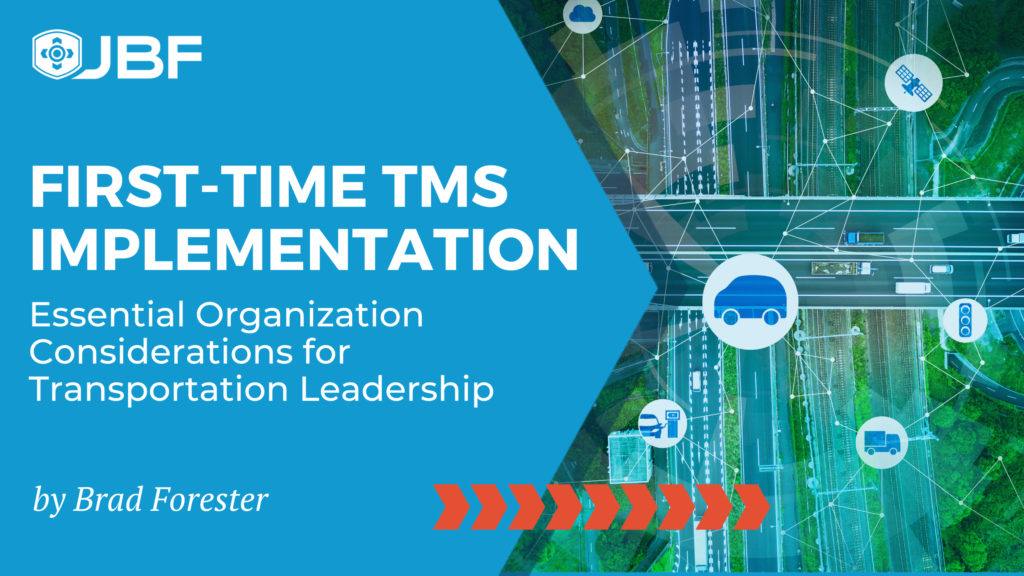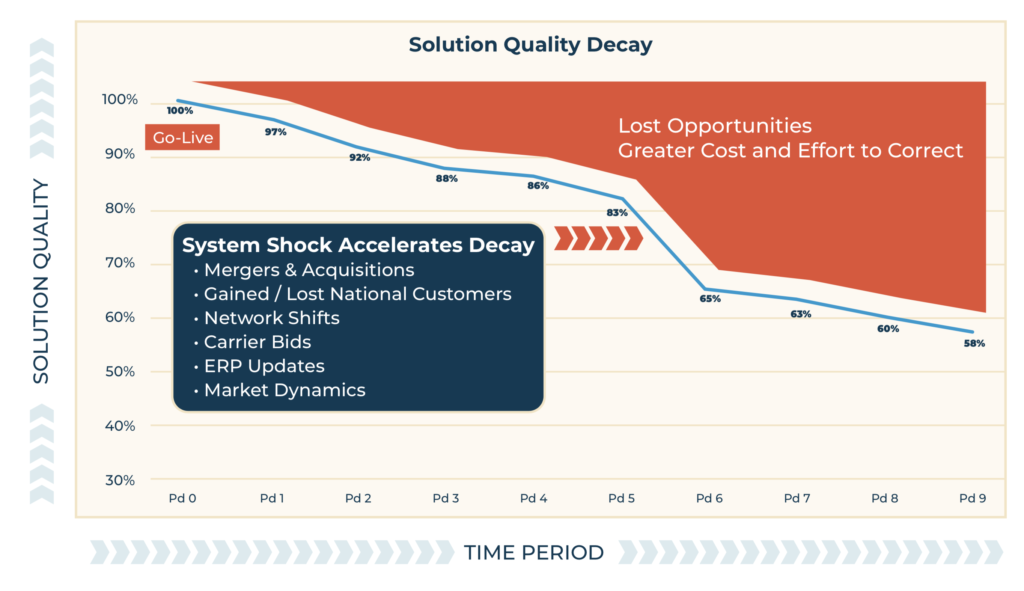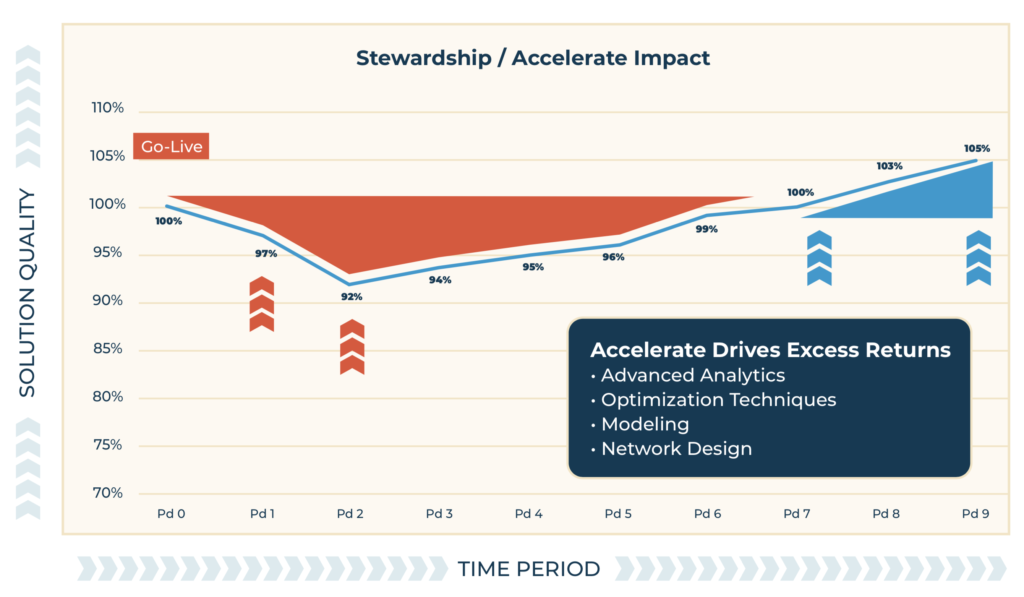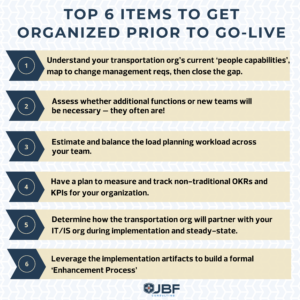The majority of these challenges are organizational and require a slight shift in mindset from transportation leadership to ensure success – ideally prior to system go-live.
Building Your First Custom Home
We often use the “New Custom Home” analogy to describe the process of implementing logistics systems. The process is largely consistent between the two, and it can help simplify systems concepts and jargon (e.g. ‘requirements traceability’ versus ‘punchlist’).
In this case, where we are working with shipper organizations implementing their first TMS, the analogy of a ‘first-time homebuyer’ is a good starting point. The process itself doesn’t change, but the first-time homebuyer often needs a little additional guidance to understand what they are getting into.
Speaking from experience, moving into my first house was eye-opening.
I had to learn about septic tanks, well water, geothermal heating & cooling, routine maintenance – and this was in addition to all the stuff I already figured out from living in an apartment.
Helpful tips like “don’t power-wash vinyl siding” or “get the septic pumped out every 5 years” accumulated and became part of the routine.
Stewardship is Critical to Long-Term Success and ROI Capture
You’ve also likely invested a very large sum of money into these tools, and most importantly – they are mission critical to daily execution and getting product shipped out the door (or raw materials into the plants depending on your scope).
Plus, you’ll be fighting system entropy the day you go-live – as the graphic above depicts. Because of this, you’re not in a comfortable position to simply “learn as you go” over the next 5-10 years.
To be sure, you will accumulate this learning along the way – but there are some fundamental items you should be figuring out well before go-live.

“Like building a new house, there is much beyond just getting the foundation and walls right, as a great home design considers long-term maintenance and value from the start.”
Based on our extensive work with first-time TMS’ers, below is a distilled list of the Top 6 items to get organized prior to go-live.
- Understand your transportation organization’s current ‘people capabilities’, map to change management requirements, and then close the gap.
A shipper that is currently leveraging a 3PL or a completely manual, paper-based process will have different organizational change and training requirements.- Understand if your team needs training or ‘up-skilling’ to be able to learn & leverage the new tools.
- Know the difference between a team that simply needs to be trained on a new set of systems and procedures, versus a team that might be hourly/clerical and may not have enough systems experience to even use these complex tools.
- For most first-time shippers, simply learning how to build & execute loads in the new TMS is not enough.
- Assess whether additional functions or new teams will be necessary – they often are!
- Super-users, or ‘lead load planners’ that also understand how the TMS is configured and the integration process are the most common ‘new function’ for first time TMS’ers. Designate them early on in the implementation, or outsource – many firms, including JBF, offer this service.
- Often times, supporting functions (e.g. Carrier Management, Rates Procurement) will also change as a byproduct of system implementation. For some first-time shippers, these will be completely new functions to lay out in the organization structure.
- Don’t forget about Master Data Management, which is a frequently overlooked area for first-time users. Understand who will be controlling the insertion, update, ongoing administration of new carriers, rates, item master information, transit times, GRIs, etc.
- Estimate and balance the load planning workload across your team.
You might need more planners than you currently have today, considering the typical volume of transactions being automated – most shippers are surprised with the volume once they have ‘full transactional visibility’ to what’s moving.- Know how the end-user procedures will impact ‘day in the life’ and bandwidth for planners.
- Estimate total transactional volume, and during testing begin to quantify or confirm assumptions based on current planner headcount and bandwidth.
- Understand how the work will need to be broken up – systemically, geographically, primary/secondary network, etc. Right at go-live, load planners will want to understand exactly what they ‘own’ versus the person sitting next to them. Don’t wait to figure this one out.
- Have a plan to measure and track non-traditional OKRs and KPIs for your organization.
Most shippers will build out daily transportation execution reports, but don’t forget about ‘new’ areas that need tracking. Some examples include:- Track load planner ‘overrides’ to the TMS plan (is it a planner behavior that needs correcting or is the system in need of correcting?).
- Track TMS adoption and time-on-task in the tool (you invested a lot of money in this tool, so it’s good to track to ensure adoption is stable or increasing).
- How effective is the TMS performing (e.g. solution quality, etc.)?
- How efficient is the integrated process? Does it take 3 hours for Load Tenders to reach the carrier? Does it take 2 hours to build an optimal solution? Or even a whole day?
- Determine how the transportation organization will partner with your IT/IS organization during implementation and steady-state.
- Decide who will handle TMS or supporting application configuration (best practice: it’s the business, not IT, that should own this).
- Which group develops new reports?
- What is the protocol or process for implementing new configuration changes? When does IT need to get involved. Which environments need to be used (DEV / TEST / PROD, etc.).
- How will you jointly measure success? Most projects are “Business-led and IT-enabled", so be sure to have a solid operating model for enhancements and defect fixes.
- Leverage the implementation artifacts to build a formal ‘Enhancement Process’.
- Capture new requirements, load planner pain points, enhancement requests, etc.
- Prioritize these with IT partners.
- Create an approach to ‘green light’ enhancements.
- Don’t forget about vendor-dictated upgrades, new features, releases, etc. It’s very common for the business to participate in configuration and testing of these periodic updates.
Conclusion
While not an exhaustive list by any means, these six items are often the critical ones to give some thought and consideration to ahead of the go-live. Simply forcing yourself to ‘project’ into the future will often yield a lot of additional work and organization requirements.
Like building a new house, there is much beyond just getting the foundation and walls right, as a great home design considers long-term maintenance and value from the start.
Reach out to your TMS systems integrator for assistance – if they haven’t discussed all this with you already, they should have!
About the Author
Brad Forester, CEO of JBF, is a highly recognized senior supply chain leader with over 23 years managing, designing, and implementing freight transport technology, Brad has a unique mix of carrier, shipper, software, and consulting experiences that benefit clients. With functional expertise in Global TMS Programs, Change Management, Organizational Design, and Systems Integration, he has been leveraging these skills to benefit clients since he founded JBF in 2003. Brad has a BA in logistics management from Michigan State University.
About JBF Consulting
Since 2003, we’ve been helping shippers of all sizes and across many industries select, implement and squeeze as much value as possible out of their logistics systems. We speak your language — not consultant-speak – and we get to know you. Our leadership team has over 100 years of logistics and TMS implementation experience. Because we operate in a niche — we’re not all things to all people — our team members have a very specialized skill set: logistics operations experience + transportation technology + communication and problem-solving skills + a bunch of other cool stuff.



